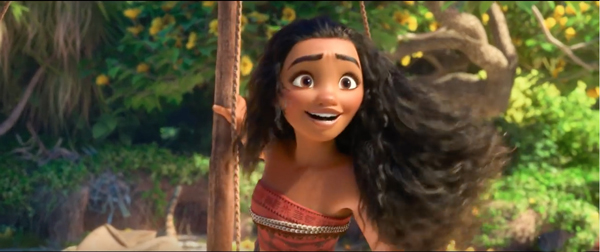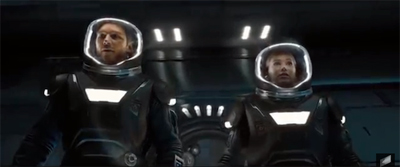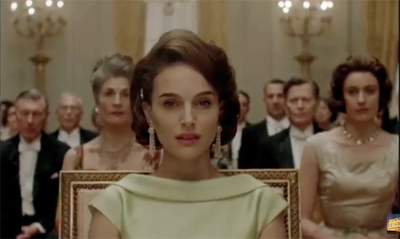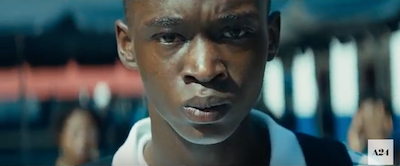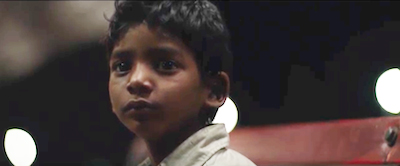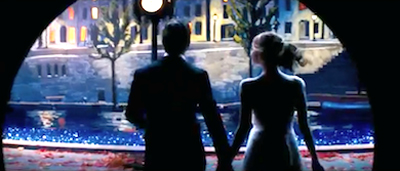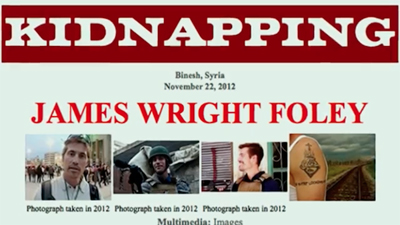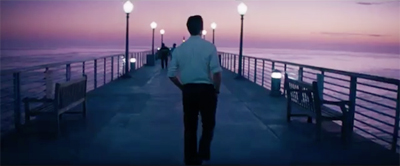Moana (2016).
DB here:
Our colleague and Film Art collaborator Jeff Smith is an expert on film sound, particularly music. He’s contributed several items to our site over the years (for example, here [2] and here [3] and here [4]). Today he’s back with his annual survey of Oscar’s musical categories. He offers in-depth analysis of how the films’ scores and songs enhance the movies’ impact.
As I’ve done in the last two years, I’m offering another preview of this year’s nominees in Oscar’s two music categories: Best Original Song and Best Original Score.
This year, La La Land’s Justin Hurwitz is nominated in both categories. He is poised to join a small group of composers who won awards in each. Leigh Harline and Ned Washington first accomplished the feat in 1941 for Pinocchio. A.R. Rahman was the most recent. He won Best Original Score for Slumdog Millionaire and Best Original Song for its Bollywood inspired closer, “Jai Ho.” Remarkably, Alan Menken was a two-fister four separate times. His eight Oscar wins came from four of Disney’s animated musicals: The Little Mermaid (1989), Beauty and the Beast (1991), Aladdin (1992), and Pocahontas (1995). (And I’ll bet you’re humming “Under the Sea” or “A Whole New World” to yourself just now.)
Will Hurwitz join this august group of composers? Hard to say, but I suspect he will since I am picking against him in one of these two categories.
Based on my track record, this likely bodes well for Hurwitz. As faithful readers know, in the past two years, I’ve gotten two right and two wrong as a prognosticator. A 50% success rate is not too good. But then again, in recent ceremonies, one of these two categories has reliably produced a surprise win. Two years ago, Alexandre Desplat’s The Grand Budapest Hotel upset Jóhann Jóhannsson’s The Theory of Everything for Best Original Score. A year later, Lady Gaga and Diane Warren came in as clear favorites for Best Original Song. But the award went to Sam Smith and Jimmy Napes for Spectre’s “Writing on the Wall.” Both of these awards confounded the conventional wisdom, and I suspect I was not alone in having a music award wreck my entry in the office Oscar pool.
Given my past struggles, I even considered taking an approach inspired by Seinfeld’s George Costanza: just pick the opposite of my natural preferences. Yet, even this only gets me back to a 50% success rate. So for better or worse, the predictions offered below are genuinely my best guess as to which nominee ultimately wins each award.
Best Original Score: Will fourteen be Thomas Newman’s lucky number?
Perhaps the most striking thing about this year’s nominees is the number of first-timers. Of the six people recognized in this category, only Thomas Newman has been nominated before. But Newman is very unusual in this regard. He has accumulated more than a baker’s dozen of nominations over the past twenty-two years and still has yet to win. Newman’s cousin Randy experienced a similar drought, but eventually won for Best Original Song for Monsters, Inc. on his fifteenth try.
Thomas Newman’s nomination this year is for Passengers and it represents the composer’s second foray into science fiction scoring. (His first was in Pixar’s 2008 film WALL-E, for which he received two nominations.)
When film composers say their goal is to fulfill the director’s vision, it reminds us that they do not write music for the sake of music. Their contributions are never meant to stand alone. Their theme writing, their selection of instruments, and the placement of their music are always dictated by the material they read in a script or that they see on screen.
And myriad choices typically flow from the composer’s first encounter with the work.
Do I strive for a big orchestral sound? Or do I go for something more intimate in the style of salon or chamber music?
Do I write a big theme that will carry through the entirety of the film? Or do I adopt a textural approach that emphasizes rhythm, harmony, and tone color more than melody?
Do I capture the varied moods and tones of individual scenes — a skill at which classical Hollywood composers excelled? Or do I try to envelop the drama in a single, sustained emotional color, one that endows even simple or ordinary actions with affective significance?
These questions are not easy ones. But Newman’s ability to consistently answer them has made him one of the most reliable and versatile composers in Hollywood.
In a Variety interview, Newman noted that he initially considered a common tactic for scoring science fiction films – that is, writing futuristic music for a futuristic setting. Newman opted instead “to play to the conventions of what a space movie would sound like.” And ever since John Williams’ score for Star Wars, space movies tend to feature a big orchestral sound.
Newman’s score features more than sixty string parts and thirteen brass. It also adds hefty doses of electronics and piano to these more traditional orchestral sounds. According to the composer, this lent the score a more contemporary edge.
Passengers’ music, though, functions “bigly” both in size and scope. Covering 96 minutes of the film’s 116 minute running time, Newman’s score also plays a wide range of moods and tones. Newman aimed to highlight the elements of loneliness, humor, and action that he felt were already present in Morten Tyldum’s “Adam and Eve in space” conceit.
Newman’s main title offers a window into his compositional techniques in Passengers. The cue begins fairly quietly with an electronic instrument playing a busy arpeggio figure. In another context, it might sound like a loop in an EDM track. Over time, though, the arpeggiated figure is subtly varied in rhythm and pitch with additional instruments thickening the music’s overall texture. The timbres at the start are rather light and airy, combining the “bell-y” sound of a Fender Rhodes with electronics imitating the sounds of strings and winds. After about two minutes, bass voices enter adding a sort of pulsing pedal tone that further grounds the cue’s minor key harmonies. A horn blast comes in about thirty seconds later, followed by a rising furioso string figure that briefly builds tension before suddenly peaking in volume and intensity. As the reverb and echo of this climactic chord fade out, the music returns to the light, airy sounds and arpeggios heard at the start.
Newman’s score and Guy Hendrix Dyas’s impressive production design (also nominated) are undoubtedly the best things about Passengers. But that likely won’t cut any ice with Oscar voters. Given the film’s tepid critical reception, it seems unlikely that Passengers will break Newman’s current losing streak.
Jackie: Dig the New Breed
Compared with Newman’s veteran experience, Mica Levi is positively a babe in the woods. Her only feature film experience prior to Jackie was on Jonathan Glazer’s Under the Skin (2013). Yet, thanks to her brooding score for Pablo Larrain’s unusual biopic, Levi is now one of only five women to receive a nomination for either Best Original Score or Best Original Song Score.
Levi’s approach to the compositional process on Jackie was unusual. She relied on her historical knowledge of the former First Lady and on Noah Oppenheim’s script. She submitted her score to Larrain without actually seeing footage of the film. Larrain himself ultimately decided on the music’s placement.
Levi’s score is largely built out of sustained chords, dissonances, and orchestral glissandi that, in the composer’s words, give you “this glooping and distortion and morphing…” These glissandi are particularly striking and unusual, but they work beautifully within the film’s dramatic context. Lots of film music has been written to capture a character’s sense of loss. What these glissandi add, though, is a sense of trauma to Larrain’s dramatic conception of the character. Jackie invites the audience to consider what it’s like to be a public figure and to have your beloved husband killed in the most shocking and bloody manner imaginable. The film dramatizes Jackie’s fight for Jack’s memory despite this numbing, almost crippling sadness. Levi’s music nicely reflects these feelings of psychic dislocation, even as Jackie struggles to scale a wall of government bureaucracy and protocol that stands in the way of her plans for the president’s funeral.
Aside from a couple of cues that Levi describes as “vapid,” the score sustains a mood that highlights the post-traumatic stress that lay just beneath Jackie’s public expressions of grief. This proves important insofar as the music provides a unifying thread to Jackie’s temporally fragmented structure. Larrain’s time scheme is bracketed by two interviews. The first is a television broadcast where Jackie gives viewers at home a tour of the White House. The second is a Time magazine interview with journalist Theodore H. White in which Jackie works to protect the JFK’s “Camelot” legacy. In between are several scenes situated either just days before or days after Kennedy’s fateful trip to Dallas. The structure is further stretched to accommodate flashforwards to Jackie talking with a priest and burying her two dead infants.
Larrain cuts freely between these points in time, creating a mosaic portrait of Jacqueline Kennedy as a figure of strength and grace. And Levi’s score not only supplies continuity, but also adds a consistent emotional undertone to the abrupt changes in cinematographic style apparent in individual scenes.
With music that is strikingly different from her earlier work on Under the Skin, Levi shows that, although Jackie is her first Oscar nomination, it will not be her last.
Moonlight: Mr. Mozart meets DJ Screw
Like Mica Levi, Moonlight composer Nicholas Britell is a relative newbie when it comes to the world of feature film scoring. Britell’s opportunity on Moonlight came thanks to his work with Brad Pitt’s production company, Plan B Entertainment. He scored two of the company’s most high-profile projects: 12 Years a Slave and The Big Short. When Plan B decided to put Barry Jenkins’ script into development, the company’s co-president, Jeremy Kleiner, sent a copy to Britell in order to gauge the composer’s interest.
Britell was struck by the “poetry” of Jenkins’s vision, which he believed was already evident on the printed page. In a follow-up meeting, the composer and director spent hours talking about films, music, and life. According to Jon Burlingame, Britell then sent a tape to Jenkins that contained an eclectic mix of styles “ranging from the Isley Brothers to Mozart.”
To my knowledge, Britell’s playlist was not used as a temp track, but it played much the same function as a vehicle of communication between composer and director. For Britell, these sample tracks gave Jenkins an impression of what he thought the film should sound like.
Britell arranged some cues for solo violin and piano as a correlate to the intimate mood established in Moonlight. Both instruments were closely miked, and these chamber-styled cues, thus, add a character-centric, arthouse ambiance to this tale of “boy n the hood.” Britell’s choice is quite fitting insofar as Jenkins acknowledges Claire Denis’s Beau travail and Hou Hsiao-Hsien’s Three Times as major influences on his coming-of-age story.
Yet Britell also applied hip-hop production techniques to some of these tracks in order to reflect both the protagonist’s character change and Jenkins’s own interest in the genre. Some cues were remixed using a “chopped and screwed” approach. This technique was innovated Houston hip-hop artist DJ Screw and it involves slowing the music’s tempo to almost half its normal speed. An example of this is heard when Kevin punches Chiron to impress his friends. Here “Chiron’s Theme” is slowed down, dropping the pitch of couple of octaves, and then layered atop itself. One hears the mournful piano chords of Britell’s central musical theme intertwined with its own pulsing echoes, the latter sounding as though they’ve risen from the bottom of an abyss.
Britell supplements “Chiron’s Theme” with cues that take shape either as swirls of static, harmonic resonance or as shards of Ivesian dissonance. All of it is in keeping with the composer’s mostly minimalist approach. Britell’s great achievement on Moonlight comes from the way the music’s small, spare style nonetheless yields moments with outsized emotional impact.
Lion: Finding the ghost of John Cage in a shantytown in India
Dustin O’Halloran and Hauschka also earned their first nominations for their music for Lion. Unlike Jackie, though, where Mica Levi began work on the basis of the script, director Garth Davis didn’t even begin looking for composers until he locked picture. He approached O’Halloran and Hauschka with the idea that they would work as a team. Hauschka would compose for the first half of the film and O’Halloran would handle the second.
Davis eventually dropped this idea, though. Instead he opted for a more unified approach in which each composer’s contributions would be blended together. O’Halloran and Hauschka then spent three weeks sending ideas back and forth between their respective studios. Having progressed in this initial idea stage, the pair met up in Los Angeles and worked together to finish the score over the next eight weeks. As O’Halloran noted in an interview, “We had spent a lot of time in each other’s world, and the thought of us making music together was pretty exciting because we’d been friends for so long.”
Initially, Davis was drawn to Hauschka’s music based on the latter’s cutting edge work with the prepared piano. A prepared piano is one in which foreign objects are placed atop or wedged between the strings attached to the instrument’s soundboard. The presence of these unusual objects alters the piano’s usual timbre, often giving it a more percussive sound when its hammers strike the strings.
The prepared piano is usually associated with American avant-garde composer John Cage. As the story goes, Cage’s use of the prepared piano solved a problem that arose from his commission to write music to accompany Sylvilla Fort’s dance piece, “Bacchanale.” Cage initially planned to write for a percussion ensemble, but then substituted the prepared piano when he realized that the performance space was too small to accommodate a large group. In interviews, Hauschka notes that he was unaware of Cage’s precedent when he first began to play prepared piano. But when people kept asking about Cage after hearing him perform, Hauschka went back to the latter’s pioneering work and now counts himself a fan.
Davis had already envisioned the use of prepared piano for the scenes set in India. His idea was that the unusual tone colors of the prepared piano would supply a sound that is comparable to Indian music without duplicating the idiom wholesale. A good example of this balance between western and eastern musical elements is evident in the scene where young Saroo gets lost in a train station. In Hauschka’s own words, the prepared piano adds a repeated “tat-tat-tat” sound that conveys the character’s panic, particular when authorities round up all the homeless children.
For some of the film’s other scenes, O’Halloran provides a melancholy theme first introduced over the film’s opening images. It features a repeated arpeggio figure in the piano accompanied by rising and falling string harmonies patterned to cyclically fold back on itself.
As with Moonlight, Davis, O’Halloran, and Hauschka opted for a smaller, more intimate sound. They recognized that the film’s potentially melodramatic story of maternal separation didn’t need additional hype from the music. Such parsimony allows Lion to unfold with subtlety and grace, its strongest moments underplayed by O’Halloran and Hauschka’s quietly affective score. The music also reflects the protagonist’s complex motivations, balancing his drive to know with his desire to spare his adopted family from feeling rejected.
La La Land: Justin Hurwitz, revivalist
Damien Chazelle’s La La Land has already received ample coverage on this blog here [10], here [11], and here [12]. To a certain extent, I have little to add to the excellent contributions made already by David (here and here), Amanda, Eric, and Kelley. Since much ink has already been spilled regarding composer Justin Hurwitz’s considerable contributions to the film, I’ll provide a few bits of historical perspective.
Hurwitz’s prime achievement, and the source of a lot of critical praise, is his skill in integrating the melodies of the numbers into score cues that perform more traditional dramatic functions. In this respect, Hurwitz is a throwback to an earlier period of film music history, one that emphasized theme writing over more texture-and-timbre oriented “sound beds” approach so common today.
For me, the role models for Hurwitz’s approach are not the studio composers sometimes associated with the musical as a genre, such as Lionel Newman or Andre Previn. He’s closer to early sixties composers who applied this integration of songs and scores in different genres. Henry Mancini is an exemplar of these techniques. He often began by writing the specific themes for his scores, and then adapted them to the verse-chorus-bridge patterns found in standard 16-bar and 32-bar song forms.
These skills are also evident in the music of Michel Legrand, whose scores for Jacques Demy are an acknowledged influence on La La Land. This “theme song and variations” strategy has become something of a lost art. In Legrand’s and Mancini’s work, one finds it not only in The Umbrellas of Cherbourg and Darling Lili, but also in dramas, comedies, and capers like Summer of ‘42, The Pink Panther, and The Thomas Crown Affair.
Yet, although Mancini and Legrand are obvious role models, Hurwitz pushes this strategy even further than his predecessors. Not only is the score integrated with the songs, but the songs themselves are integrated with one another. After the lounge performance of “Mia & Sebastian’s Theme,” each new song they perform sounds like a subtle variation of its predecessor. The tempo and meter of the songs differ quite considerably. But they nonetheless seem to spring from the same Schenkerian ursatz, [13] working through the same harmonic shifts, cadential patterns, and delicate shifts from minor to major.
Once La La Land’s concluding “dream ballet” begins, Hurwitz’s themes flow seamlessly into and out of one another. The recapitulation of motifs – both dramatic and melodious – feels completely cohesive and whole. This music’s organic unity is felt even despite the fact that it accompanies a time-shifting, synoptic, happily-ever-after fantasy.
All of Hurwitz’s tunes are cunningly effective earworms. By reprising all six of them in a final stylized depiction of the characters’ emotional journey, the dream ballet provides La La Land with the kind of musical climax that most film composers can only dream about.
And if you were one of Hurwitz’s Oscar competitors wanting to cry, “Foul!” I think you’d have a point. At various points in its history, the Academy has bracketed off music scores and song scores into separate categories. Their earlier existence is almost a tacit admission that voters are being asked to make apples-vs.-oranges comparisons.
For this year, at least, Hurwitz is likely to benefit from the fact that La La Land is something of a unicorn. During the past twenty years, lots of musicals have received recognition from the Academy. But in almost all cases, these have been either adaptations of successful Broadway musicals or weird pastiches of preexisting popular music. Consequently, they’ve always been excluded from consideration for Best Original Score. La La Land is, thus, not only an original screen musical, but one in which every cue and every tune is both new and infused with Hurwitz’s singular vision.
None of this would matter if the film didn’t deliver the goods. But La La Land does so in spades. You’ll find few films that combine its emotional heft, its topline production values, its formal sophistication, and its intricate relation to its generic heritage. As both a valentine to the City of Angels and perhaps the meta-musical to end all meta-musicals, La La Land is clearly the front-runner for Best Picture. And I expect Chazelle and company will collect an armful of hardware long before that final award is announced next Sunday night.
Prediction: Need you ask? It’s Justin Hurwitz all the way!
This is a very strong field and I admire the way all of these composers have experimented with technology and compositional techniques to defy convention. Yet they’ve also created work firmly tethered to important aspects of Hollywood tradition, especially in the ways their scores convey mood and character subjectivity.
Yet, although the piano plays a prominent role in the orchestrations and central musical concepts of all these scores, I’m picking the one that features an actual pianist as protagonist. Hurwitz’s expected win in this category is as close to a lock as these things get.
Best Original Song: Docs and tuners and toons, oh my!
As my header suggests, one of the most striking things about this year’s field is the fact that the songs represent particular niche markets within the industry. Documentaries and animated films occupy opposite ends of the spectrum in terms of their budgets and box office returns. But they are both aimed at demographic segments that are either a little or a lot narrower than the mainstream audience for the biz’s more traditional tentpoles.
And as we’ve already seen on this blog, musicals are one of those “they don’t make ‘em like they used to” genres that caters to more specialized tastes. This seems to be a change from, say, twenty to thirty years ago when Original Song nominees came from a variety of genres, including studio-produced action films, comedies, dramas, and fantasy films, in addition to those featured in Disney’s animated musicals.
Moreover, there is also plenty of star power in this year’s field. Justin Timberlake, Lin-Manuel Miranda, and Sting are among this year’s nominees.
“The Empty Chair” was written by J. Ralph and Sting for Jim: The James Foley Story, a portrait of the journalist kidnapped and executed by ISIS terrorists. It continues the recent trend toward recognizing songwriters’ contributions to contemporary documentaries. Last year saw nominations for The Hunting Ground and Racing Extinction, the latter featuring another track co-written by J. Ralph. Two years ago, “I’m Not Gonna Miss You” was nominated from the music doc, Glen Campbell: I’ll Be Me. This trend is likely to continue. According to Variety’s Jon Burlingame, seventeen of the ninety-one songs eligible for this year’s award came from documentary films.
In composing the lyrics, Sting drew lines from Foley’s letters home and from from reminiscences of his colleagues. Placed in the end credits, the song sums up what we’ve just seen. The empty chair is, of course, the place at the family table to which Foley will never return. As an encomium to the fallen journalist, the song reminds that Foley’s death leaves an empty place both in his family and in his profession.
The film’s subject matter is weighty and the song’s plaintive melody and spare arrangement nicely encapsulate its gravity. Yet the fact that the film is little-seen makes it an uphill climb in terms of collecting Oscar votes. All of the other nominees have received much greater exposure and are also more clearly integrated into the narratives of their films. This is a case where the nomination itself is the real award. Although “The Empty Chair” gave Sting his fourth nomination, he’ll have to content himself with the sixteen Grammy awards he’s already won.
Islanders and trolls (and not the Internet variety)
Justin Timberlake, Max Martin, and Shellback all received nominations for “Can’t Stop the Feeling!” from Dreamworks Animation’s Trolls. The film dramatizes the conflict that ensues when a group of ever-cheerful Trolls is kidnapped by the dour Bergen. The latter it seems only achieve happiness one day a year on Trollstice, an annual holiday where the Bergen feast on Trolls. Poppy and Branch, two trolls that survived the Bergen’s raid, set out to rescue their friends before it is too late.
“Can’t Stop the Feeling!” appears toward the climax in a scene where Poppy and Branch transform the Bergen’s holiday banquet into a big dance party. The song helps the Bergen realize that they can be happy every day of the year, not just on Trollstice.
Timberlake released “Can’t Stop the Feeling!” in May, about six months before the film’s debut. It went on to become the top selling song of 2016 racking up more than two million downloads. In writing it, Timberlake set out to create a modern disco song that would recall the ebullience and effervescence of the best dance music of the seventies. This proved important in matching its vibe to some of the older classics featured in Trolls, such as Donna Summer’s “I Feel Love” and Earth, Wind, & Fire’s “September.”
In another year, the track’s enormous popularity and mad beats might easily carry the day. Yet, as a rule of thumb, feel-good songs haven’t fared too well in Oscar voting. There are exceptions, to be sure. In fact, the aforementioned “Under the Sea” and “Jai Ho” likely come to mind as fairly obvious examples. But, although feel-good songs are often nominated, the winners much more commonly are either love songs (“Take My Breath Away”, “Can You Feel the Love Tonight”) or “I Want” songs of the type David described as a typical element in Broadway musical song plots (“Fame”, “Glory”).
Indeed, Lin-Manuel Miranda’s “How Far I’ll Go” from Moana is an almost textbook example of the latter. The song is featured in an early scene where the protagonist expresses her desire to explore the world beyond her Polynesian island, even though her duty to her tribe prevents Moana from sailing beyond the reef that her father’s decree establishes as a boundary.
Beyond its plot function, the song’s soaring chorus and uplifting key change beautifully express Moana’s hope and wonder about a distant world that she feels is her destiny. Miranda himself has said he went Method to connect to the character’s aspirations. He went back to his childhood bedroom to write the song. There Miranda recalled sensing a similar gulf in his own life between his love of home and family, on the one hand, and the inexplicable pull of a larger world beyond it, on the other.
With Moana conceived as the latest in a long line of Disney princesses, one could easily be cynical about the kinds of synergistic tie-ins that fuel the studio’s bottom line. But the film is tightly constructed and beautifully animated. Moreover, Miranda’s songs have the sort of wit and verve that makes him a worthy recipient of the torch passed on by Alan Menken, Howard Ashman, Tim Rice, Elton John, Stephen Schwartz, and Phil Collins. These songwriters spearheaded the resurgence of the animated musical and helped the Walt Disney Company rebuild itself from the ground up. With Miranda signed on to Disney’s reboot of The Little Mermaid, it appears that this is both the beginning of a beautiful friendship and the burnishing of an important legacy.
L. A. plays with itself: La La Land
The final two nominees come from La La Land. “City of Stars” is first heard when Sebastian is walking the boardwalk. It expresses his doubt about whether his budding relationship with Mia will end as yet another failed dream. This version of the song is low-key and a bit of a trifle. The song begins with a long, repeated piano vamp. The vibes and guitar then play its main motif before Sebastian eventually begins whistling its tune. And after one verse, the song comes to a tentative, softly longing cadence.
“City of Stars” returns, though, in a duet staged in Sebastian’s apartment. This is the version that Oscar voters likely will remember because it contains a more fully fleshed-out structure with verse, chorus, and bridge. Sung live on set by Ryan Gosling and Emma Stone, this rendition is a bit faster and contains a bigger emotional arc than the waterfront ersion. The lyrics begin just as they were when Sebastian sang them on the boardwalk. But lyricists Benj Pasek and Justin Paul add a new verse in which Mia refers to the couple’s first meeting in the club.
At this point in the story, the song appears to fulfill two functions. First, it takes stock of the couple’s relationship, encouraging the audience to revisit earlier scenes of the film. Secondly, and more importantly, the song encapsulates the intertwined dual plotlines so commonly found in classical Hollywood narratives. Here Mia and Sebastian seek the fulfillment of their professional ambitions in a way that matches the happiness they’ve found in their personal lives.
As Jenelle Riley notes [17] in Variety, “City of Stars” has “become an anthem of sorts for the film.” And the big reason for this, I think, is that it best captures the film’s bittersweet tone. If you wanted to show someone a clip to give a sense of what the film is like, you’d probably pick the planetarium scene or perhaps the duet on “A Lovely Night.” But if you wanted to play something from the soundtrack to accomplish the same task, I suspect “City of Stars” is what you’d choose. The song won the Golden Globe a little over a month ago, and the fact that it’s been taken up as a stand-in for the film is a big reason why.
La La Land‘s second nominated song, “Audition (The Fools Who Dream)” is by contrast an iconic big number. As David pointed out in an earlier entry [11], in the Broadway musical song plot, this is usually a second-act showpiece that sets up the play’s final resolution. “Audition” serves a similar role in La La Land. It provides the key plot point that initiates the climax.
Furthermore, “Audition” evokes other “big numbers” from recent musicals. As an “actorly” moment for Emma Stone, it resembles Jennifer Hudson’s showstopper, “And I Am Telling You I’m Not Going” from Dreamgirls (2016), and Anne Hathaway’s heart-render, “I Dreamed a Dream” from Les Misérables (2013). As Kelley and Eric pointed out in last week’s blog, Stone’s performance was shot live just as Hathaway’s was a couple of years ago. The references to dreams in Stone’s and Hathaway’s songs offer a further connection..
Given its late appearance in La La Land, it doesn’t quite carry the same resonance that “City of Stars” has. Still, I think “Audition” will nonetheless play a part in Oscar voting by giving Stone a boost for Best Actress. Jennifer Hudson and Anne Hathaway both won Oscars for their roles. No doubt their “big numbers” helped their campaigns. Emma Stone seems poised to follow in their footsteps.
Prediction: I’m going out on a limb here, even though I definitely hear it creaking. “City of Stars” is the clear favorite, having already won awards at the Golden Globes and from several regional critics’ organizations. I think, though, there is a chance that “Audition (The Fools Who Dream)” acts like a third party candidate here, siphoning off just enough votes from “City of Stars” to allow a dark horse to win.
The dark horse? Lin-Manuel Miranda’s “How Far I’ll Go.” Given the potential for a La La Land sweep, this may not seem like the most rational choice. But I’ve stuck with the clear favorites the past two years without much success.
And there is an intuitive logic to support a surprise win for Miranda. Songs from Disney musicals have dominated the category, chalking up eleven wins since 1989. And Miranda has conquered all the other entertainment fields he’s entered. Why not the Oscars as well?
As I noted at the outset, Justin Hurwitz has a chance to join a small group of film composers who’ve taken home two or more Academy Awards in the same year. But Miranda has the opportunity to join an even more elite club, namely the EGOTs. (The term is an acronym for individuals who have won a Emmy, a Grammy, a Tony, and an Oscar.) After his extraordinary success with Hamilton, I predict that Miranda will add another trophy to his case.
But then again, maybe I’m just a fool who dreams of actually getting his Oscar picks right.
Very special thanks to Jon Burlingame, whose reportage has been extraordinarily insightful over the years. He has not only helped me in the writing of this blog, but his work also has informed my scholarly work on film music and film songs more generally. Burlingame’s own overview of the Oscar music nominees can be found here [18] and here [19].
A hearty thank you as well to Eric Dienstfrey, who allowed me to bounce ideas off him and made some terrific suggestions in his own right.
Articles about the nominated composers abound on the internet. You can check an interview [20] with Thomas Newman discussing his score for Passengers; an interview [21] with Mica Levi on Jackie; two stories (here [22] and here [23]) about Nicholas Britell and Moonlight; two conversations (here [24] and here [25]) with Hauschka and Dustin O’Halloran about Lion. The Independent offers a track by track overview [26] of La La Land’s soundtrack album. Justin Hurwitz also provides a summary [27] of La La Land’s songs in this article from Variety.
Want to sample some of the nominated scores? YouTube offers the Passengers soundtrack [28], as well as an excerpt from the Moonlight soundtrack [29] and a track from the Lion score [30]. To get a sense of Mica Levi’s unusual glissandi technique, listen to the “Intro” of [31]Jackie [31].
The coverage of the nominees for Best Original Song is almost as voluminous as that for Best Original Score. For a discussion of J. Ralph and Sting’s “The Empty Chair,” see this Variety article [32] by Jon Burlingam, which also considers the increasing popularity of songs within the documentary format. This Los Angeles Times article [33] discusses Justin Timberlake’s songs for Trolls, including “Can’t Stop the Feeling!”
On Indiewire Moana’s directors, John Musker and Ron Clements, discuss their collaboration [34] with Lin-Manuel Miranda. Miranda’s own comments about his process on “How Far I’ll Go” can be found on the Trippin’ With Tara [35] website.
For more on the development of “City of Stars,” see this Variety interview [17] with Benj Pasek and Justin Paul.
Many of the nominated songs are featured in Youtube videos. “Can’t Stop the Feeling!” is here [36], and the scene from Moana featuring “How Far I’ll Go” is here [37]. Lionsgate also has issued an official clip [38]promoting “City of Stars.” It combines footage from both of the scenes in which it appears. “Audition (The Fools Who Dream)” is featured in a teaser trailer [39]for La La Land.
For Jeff’s earlier Oscar music entries, go here [40] and here [41].
P.S. 21 February 2017: Thanks to Fiona Pleasance for corrections! You can read her and her colleagues’ stimulating thoughts on La La Land at MostlyFilm [42]. Their entry nicely fits with the discussions on our site.
Trolls (2016).
